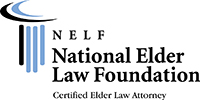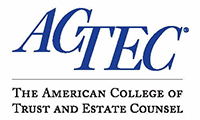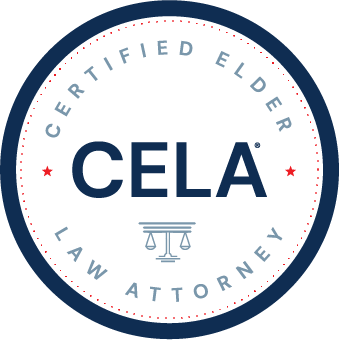Firm News
Trust Protector
A trust created by a family may go on for several generations. What makes sense now or how the trust is structured may not make sense for the next generation. There can be many events that require a trust to be modified after the original creators pass away. Changes in the law, change in circumstances, change in family structure, technology changes, etc., all of these events can make a trust less effective than originally contemplated. This is especially true for a family with a special needs member.
Wealth owners are understandably searching for greater flexibility in these long term trusts to accommodate unanticipated and unforeseeable future events that will affect the intended trust beneficiaries and the property being administered for their benefit. Enter the “trust protector.”
WHAT IS A TRUST PROTECTOR?
There is no long-standing commonly accepted definition of the role of a trust protector. When we use the term trust protector, we mean an individual (or a succession of individuals) appointed by the settlor of a trust to ensure that the trustee carries out the settlor’s intent behind the establishment of the trust generations in the future, acting as the figurative eyes, ears and voice of the settlor. In this paradigm, the trust protector’s primary responsibility is to oversee the trustee, watching to be sure that the administration of the trust proceeds in accordance with the settlor’s intentions and standing ready to exercise her authority to alter the course of administration when necessary, or simply desirable. A trust protector typically possesses defined limited authority to engage in specified actions, separate and apart from the power and authority of the trustee, such as to remove a trustee, appoint a trustee, add beneficiaries or otherwise modify the terms of a trust.
The trust protector may play a particularly important role in long-term trusts as the beneficiary generations become more remote from the settlor and the settlor’s original intentions. Planning for the certainty of future changes in circumstances without knowing what the specific changes will be is a daunting challenge. The judicious use of trust protectors may help guide the trust throughout these generational changes.
WHAT ARE A TRUST PROTECTOR’S POWERS?
A trust protector’s powers are those expressly stated in the governing instrument. There are no inherent powers that arise simply by designating a trust protector to act. This makes the choice of law governing a trust and drafting to specify the powers of the trust protector of paramount importance.
The table below is a non-exclusive list of powers that may be granted to a trust protector.
|
Powers related to the trustee |
Powers unrelated to the trustee |
|
Power to remove and replace an acting trustee |
Power to change the situs of the trust |
|
Power to appoint additional trustees |
Power to change the governing law of the trust |
|
Power to act as a tiebreaker when multiple trustees reach an impasse |
Power to terminate the trust under certain defined conditions |
|
Approval authority for discretionary distributions or the sale or management of specific assets |
Power to amend the trust for any valid purpose, such as to respond to changes in federal or state tax law |
|
Power to veto decisions made by the trustee |
Power to alter the beneficial interests in the trust, such as to add or remove beneficiaries |
POWERS REALTED TO THE TRUSTEE
Trust protectors are frequently named for the specific purpose of removing and replacing an acting trustee, or for appointing additional or successor trustees. Although settlors may give these powers to beneficiaries, the potential abuse of the removal power by the beneficiaries should be considered. An unsatisfied beneficiary’s first reaction is to replace a conscientious trustee with one that is more accommodating to the beneficiary’s wishes. A trust protector with the ability to remove and replace a trustee can provide an impartial assessment of the trustee’s performance and substitute the trustee where appropriate. The settlor then has some assurance that the substitution is necessary and the trustee has some assurance that unpopular decisions will be reviewed objectively and without the need for judicial intervention.
WHY OR WHY NOT A TRUST PROTECTOR?
From the settlor’s perspective, the question of whether to appoint a trust protector is less about what powers a protector may have than why a protector may be desired. It is unlikely that a trust drafted today will remain functional 100, 200 or more years or more from now, as a number a number of states allow. In considering whether to appoint a trust protector, try to imagine what society was like seven generations ago and what it might be like seven generations into the future. Think of the trust instrument as the written guide of the settlor’s intentions for benefitting the chosen beneficiaries, whether known or unknown to the settlor today. Although it is the trustee’s duty to follow the terms and purposes of the trust, at some point the terms of the trust as originally drafted may no longer function to fulfill the settlor’s original intentions. Indeed, circumstances, laws and family relationship change too often to not require some adjustments.
WHO SHOULD AND SHOULD NOT SERVE AS TRUST PROTECTOR?
Determining whom to appoint as trust protector should be made in the framework of the intended trust protector’s scope of responsibilities. As with the selection of a trustee, the specific responsibilities may require certain attributes or skills that would be beneficial or necessary in the trust protector.
PROVIDE A MECHANISM FOR SUCCESSION
As with the appointment of a trustee, it is important to provide for a mechanism for succession of the trust protector. A well drafted trust protector provision will include a section that addresses the death, incapacity, or resignation of the trust protector as well as the appointment of a replacement trust protector. There should be a mechanism for notice to the trustee and possibly beneficiaries that a trust protector can no longer serve and must be replaced. It is probably wise to use the same criteria for determining the incapacity of a trust protector as the trust instrument provides for an individual trustee.
The Law Office of Bradley J. Frigon is frequently appointed by individuals as a trust protector. The Law Offices is well suited to serve as trust protector due to our expertise in the area of taxation, trust administration and special needs law matters.
If you’d like to hear more about trust protector services and other services offered by the Law Offices of Bradley J. Frigon, please contact our office or visit us at www.bjflaw.com.












